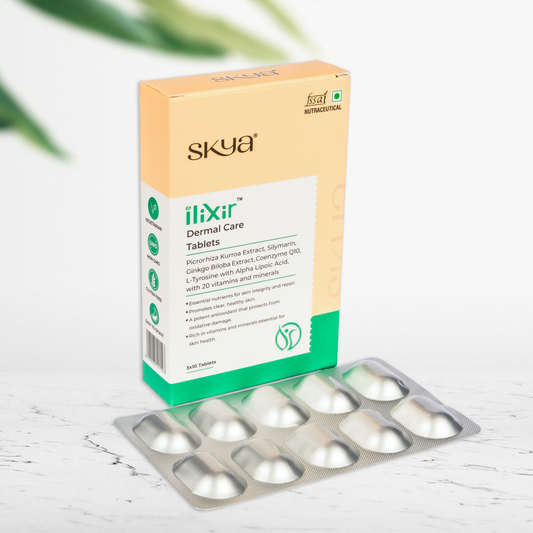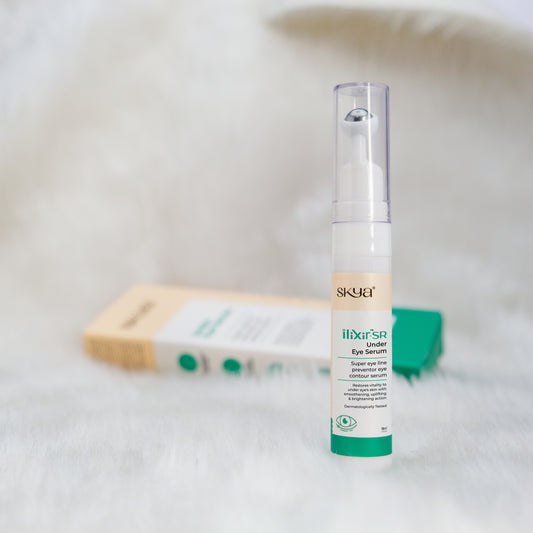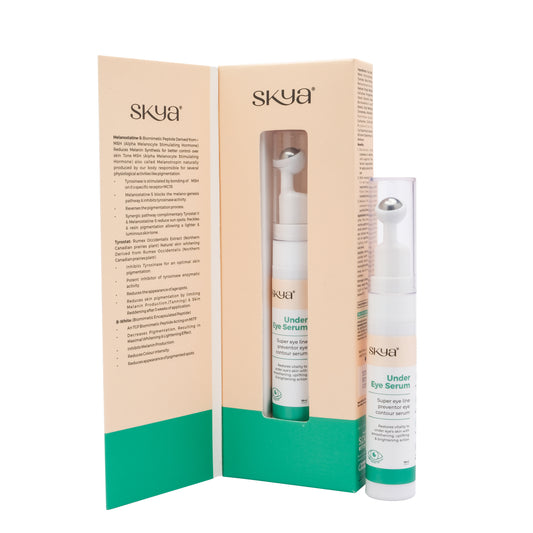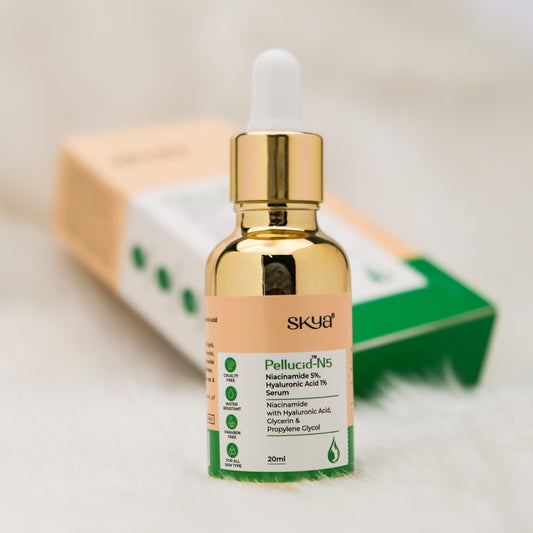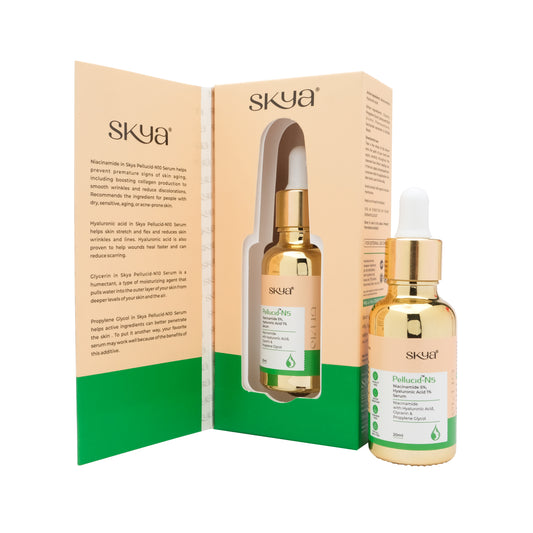Mandelic Acid Overview: Skin Care Uses, Side Effects & More - The skincare routine is just more than “ Washing your face two times a day”. Various kinds of products including serums, lotions, moisturizers, etc. are invented to give a contribution to the skincare routine. Mandelic Acid is also one of the most popular ingredients that helps to offer healthy and radiant skin. But over usage always creates major problems. In this blog, we will explore Mandelic Acid Overview: Skin Care Uses, Side Effects & More. Stay Tuned!
What is Mandelic Acid: Let’s Dive into its Scientific Background
Mandelic Acid is an aromatic alpha hydroxy acid with the chemical formula C6H5CH(OH)CO2H. It’s a crystalline white solid that is soluble in water. It helps to form various drugs. It was discovered in 1831 by Ferdinand Ludwig Winckler, a German Pharmacist when he was experimenting with the extract of almonds with hydraulic acid. The name Mandelic acid is derived from the German “Mandel” which means almond.
Mandelic Acid For Skin Care
As mentioned above, Mandelic acid is a gentle alpha hydroxy acid also known as AHA made from the bitter extract of almonds. This plays a pivotal role in offering healthy skin. It helps to brighten, soften, and clear the skin. Many brands use the composition of Mandelic acid in their skin care products. But unlike other acids, Mandelic acid won’t irritate the soft and sensitive skin.
How Does Mandelic Acid Function on The Skin?
Our skin has multiple layers which are the epidermis, dermis, and hypodermis. The layer that we see is called the epidermis. The first layer of the epidermis is known as ‘the stratum corneum” which has around 10-30 layers of dead skin cells. Mandelic acid helps to exfoliate the dead skin cells from the top layer "the epidermis". In more simple terms, mandelic acid helps to remove dead skin cells so that new and fresh skin cells can build and offer you bright and glowing skin.
Moreover, it also plays a major role in collagen production, which helps to improve the elasticity of the skin.
Do You Know?
The old skin cells are replaced by the new skin cells. The entire cycle takes an average of 28 days and the process is called “ Skin cycle”. As we grow older, this process naturally slows down and starts demanding more days to complete the cycle. It takes about 40-45 days to complete the cycle.
Benefits of Mandelic Acid
Apart from exfoliating dead skin cells, Mandelic acid is loaded with multiple skin-related benefits that we have mentioned below:
- Offers Eventone Skin
- Reduce the hyperpigmentation
- Fights with acne
- Reduce fine lines
- Gentle on all skin types
- Tackle clogged pores
How To Use Mandelic Acid: A Start to Finish Guide by Skin Experts
If you are a skincare enthusiast and willing to add Mandelic acid to your skincare routine, but don’t have any idea about how to use it carefully. Fret not! We have come up with a detailed guide for you to make sure you are using the Mandelic acid for your charming skin in the right way.
Here we go!
- Always choose the skin care product that contains precise and lower concentrations of Mandelic acid. Mandelic acid serums and peels with a concentration under 10% can help to keep your skin from side effects.
- Use the mandelic by putting a gap of 2-3 days to know the tolerance and reaction of your skin. Also, if you have sensitive skin, you must go for a small patch test on your skin before regular use of mandelic acid.
- Always apply the mandelic acid at night to avoid any sun-related side effects.
- Don’t forget to wear sunscreen because mandelic acid can make your skin more sensitive to the sun. Use sunscreen of SPF 30 every morning before interacting with the sun.
- Mandelic acid’s functions and benefits are different from the other AHA. Don’t mix Mandelic acid with the other AHA. It can irritate your skin and cause dryness.
Side Effects of Mandelic Acid
Well, it is the perfect AHA for people with sensitive skin because it doesn’t irritate the skin like other AHAs. However, it is often noticed that some people with sensitive skin can experience Mandelic Acid for instance irritation, peeling, dry skin, redness, and others. So, always start with low concentration to know how your skin reacts.
Moreover, if the person is allergic to almonds then he/she should not use mandelic acid.
Wrapping Up!
The blog aims to inform about Mandelic Acid Overview: Skin Care Uses, Side Effects & More. Mandelic acid is a gentle alpha hydroxy acid also known as AHA that is made from the bitter extract of almonds. It helps in collagen production, which helps to improve the elasticity of the skin. It is a perfect AHA to add to the skincare routine. However, always start with low concentration to avoid side effects on sensitive skin.
Frequently Asked Questions About Mandelic Acid Overview: Skin Care Uses, Side Effects & More
Q1: Which is the best serum for sensitive skin?
Ans: SKYA’s Niacinamide, Hyaluronic Acid Serum is one of the perfect serums which is equipped with Niacinamide and Hyaluronic Acid. The serum helps to reduce acne marks, minimize the appearance of large pores, control excess sebum production, and offer healthy and radiant skin.
Q2: What is mandelic acid & its benefits?
Ans: Mandelic acid is a gentle alpha hydroxy acid also known as AHA that is made from the bitter extract of almonds. Mandelic acid helps to exfoliate the dead skin cells from the top layer "the epidermis" so, that new and fresh skin cells can build and offer you bright and glowing skin.
Q3: What are the side effects of mandelic acid?
Ans: Mandelic acid doesn’t irritate the skin like other AHAs. However, it is often noticed that some people with sensitive skin may experience side effects of mandelic acid like irritation, peeling, dry skin, redness, and others if they use it without the doctor's consult.
Q4: How should I use mandelic acid for better results?
Ans: Start with a low concentration. Mandelic acid serums and peels with a concentration under 10% can help to protect your skin from side effects. Always apply the mandelic acid at night to avoid any sun-related side effects.


